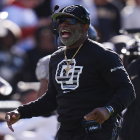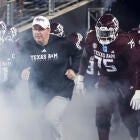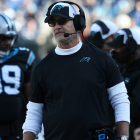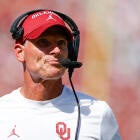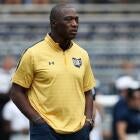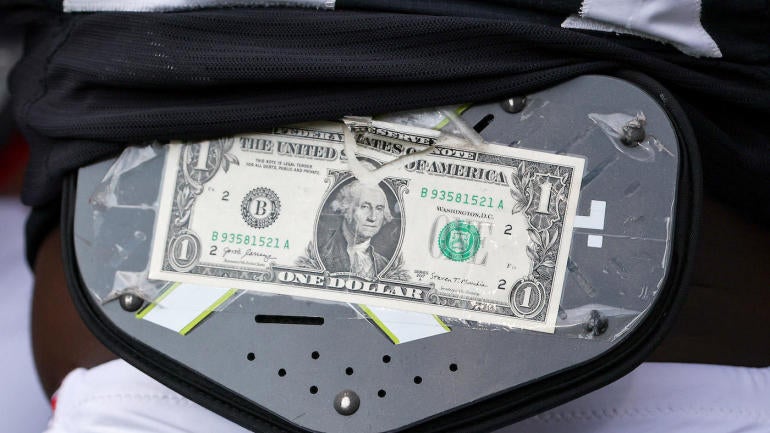
Six months ago, Gerry Cardinale stood outside a conference room at the swank Aria Resort and Casino in Las Vegas having already blown away of roomful of attendees during the annual Sports Business Journal Collegiate Athletic Forum.
During his remarks, the RedBird Capital founder and CEO expanded on his private equity firm partnering with LeBron James to bring an NBA expansion team to Las Vegas. As if that wasn't eyebrow-raising enough, he added that private equity was ready to jump into the college sports landscape cleats first. He specifically pointed to college football being tremendously undervalued.
In terms of total revenue compared to the NFL, college football was earning five times less. In terms of media rights revenue, 10 times less.
"We should close that gap," Cardinale insisted.
That was a bit shocking to hear from a financial wizard. Or, perhaps it shouldn't have been. Last August, RedBird Capital led an acquisition of soccer giant AC Milan for $1.3 billion. It already has a stake in the Pittsburgh Penguins and Boston Red Sox.
There were reasons the college gap existed. Schools and athletes were constricted by NCAA rules. Athletic departments were business capitalistic enterprises overseen by a non-profit NCAA. Oil and water get along better.
But with the House v. NCAA settlement on Thursday, the infiltration of private financing into college sports became all but official as the NCAA and the Power Five conferences came to the landmark agreement. The $2.8 billion settlement has opened the door to that influence.
The proof was being laid out that day following Cardinale's presentation. He was asked by a New York Times reporter, hypothetically, how much would Michigan football be worth as an investment by his company?
"I'd say it's worth at least a billion dollars," Cardinale said.
Much had been revealed in that moment. Not only had one of the most powerful financial firms on the planet been thinking about such a proposition, but they'd actually run the numbers, which were very enticing.
"The costs of competing are going up," Cardinale said. "You gotta spend if you want to win … They're not going to be able to do it with just donors. Bringing in third-party capital, it's not crazy. It's a very rational thing."
Big picture, such a union would all but formalize the long-discussed FBS breakaway between the Power Four and everyone else. That $2.8 billion settlement figure makes it so.
It's understood that a new infusion of cash must be brought in to support the ever-developing professionalization of what used to be amateur sports. What might as well be called "College Sports Inc." is ready for its debut, with its No. 1 offering being football.
Cardinale was right. College sports is basically being consolidated at the top. The SEC and Big Ten together are taking 58% of the College Football Playoff media revenue under the new contract. Seven of the last nine national champions have come from the top 10 in annual athletic budget revenue -- the exceptions being Clemson in 2016 and 2018 as the Tigers ranked 17th in that category, according to USA Today.
In wake of the settlement, we will live with players being paid for their services because we've already lived a version of it for years, really. We're accustomed to it, or at least we should be by now. We've already seen Colorado QB Shedeur Sanders basically drive his Bentley to work.
But if Michigan is worth $1 billion, what is the going rate for Texas? Ohio State? Point is, the door is open for investment in those top brands, and Big Money seems ready to pounce.
Private equity will be involved because ... how could it not? Schools will need money to finance staying at the top level of competition. Florida State has already been loading up a war chest to buy its way out of the ACC, and other schools in the league may follow.
No one really knows what that $1 billion would bring to an athletic department. Cardinale stressed such a firm would not want, or need, a hand in the day-to-day operation of an athletic department. This is literally investing in an undervalued property.
As part of the settlement, Power Five schools will be on the hook for an average of $22 million for the next 10 years. Add in the funding of expanded rosters with more scholarships, and that figure could go up to $30 million annually. That's $300 million per school over the next decade.
The likes of Cardinale and RedBird Capital are waiting in the wings. It was reported this week Cardinale's new business, College Athletic Solutions, plans to invest $50 million-$200 million in 5-10 top athletic departments. RedBird Capital is partnering with Weatherford Capital, an equity firm founded by former FSU quarterback Drew Weatherford. Eventually, CAS could invest in the majority of the Power Four.
That's the best evidence to date of a formal breakaway between the haves and have nots, a move that's been speculated for years. Now we're seeing it, in practice, if not on paper. Forget about leaving the NCAA, an organization that will never be what it once was. In this new climate, schools may oversee enforcement themselves. As the NCAA's power diminishes, it is becoming a heck of a party planner -- for the NCAA Tournament -- each March, and there's really nothing necessarily wrong with that.
Schools will operate within the NCAA, only if they choose, but their revenue in this new investment world will define their real membership.
Those firms won't be necessarily buying a stake in power schools. They'll be buying a brand. RedBird Capital and Weatherford will want a return on their money -- 10%-12% seems likely based on the business - but it's more about the ground being broken with third parties now becoming investors in the landscape.
Think of what "owning" a part of Texas, Michigan and Ohio State would look on the portfolios of those firms investors. New for one thing, because it's never been done. Profitable for another, or else the firms wouldn't be getting involved.
"I'm watching what's happening here," Cardinale said in December. "One of the questions you should be asking everybody is: Is this the beginning of the end of the conferences? How about one big college [conference with 68 Power Four teams]? Why not start with that?
"Why don't you put them all together? If you went to all the media distributors and said, 'OK, we're bringing all 68 and divvy up this programming. You'd get, I believe, a sum of the parts that are better [greater] than the whole. You'd get a better result. The NFL has done that."
Cardinale made those comments before the CFP contract was finalized. ESPN bought the value of those 68 schools and owns their rights along with Fox. It doesn't seem like conferences will to dissolve into one big NFL-like unit anytime soon, but the House settlement created a sped-up timeline for private equity to get involved anyway.
That new money is going to have to come from somewhere. State subsidies, loans, booster involvement and reallocation of university funds could all help. But $300 million is $300 million. As part of the settlement, it seems schools that want to compete at the absolute top level will have to expand football scholarships, for example, to at least 100 per year.
"Roster management and actually taking that [money] and investing it wisely into athletes and managing your rosters in a professional manner is going to be extremely important," Weatherford told the Wall Street Journal. "I think a lot is going to change, and nobody wants to be on the outside looking in when the carousel stops."
We don't even mention cost of attendance anymore. That extra income started in 2015 and was disguised as the full cost of a scholarship but was available only to athletes. That basically broke the seal on player compensation. In 2021, NIL took a black market of under-the-table payments in recruiting and made it public. We were almost conditioned for this settlement bombshell that probably won't be talked about much in a year or two.
College sports, particularly football, has long been a multi-billion dollar enterprise. It just had no center, no leader(s), no mission statement. While it operated stamped with the NCAA brand, everyone, all the time, all at once, was out for themselves.
"That'll change," Cardinale said. "There will be increasing evolution in their thinking. When you start to get guys like us involved, it's going to bring that. The unification thing, that's what you guys should be talking about. I'm telling you, this thing is coming."
What happened this week wasn't a revolution so much as the creation of a new business with the athletes as partners in revenue sharing. Whatever they decide in the future will have an impact on everything from media rights revenue to coach salaries. Maybe not right now, but certainly in the future.
It's only a matter of time before a central player representative emerges. Long-time player advocate and activist Ramogi Huma stressed to CBS Sports last week that he is interested in being that person once the smoke clears from the crater left in the ground by the House explosion. Again, for such a leader to emerge may take years, but he/she is out there.
First, however, introductions with Gerry Cardinale and his peers will be in order.
![[object Object] Logo](https://sportshub.cbsistatic.com/i/2020/04/22/e9ceb731-8b3f-4c60-98fe-090ab66a2997/screen-shot-2020-04-22-at-11-04-56-am.png)









